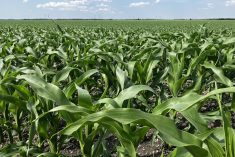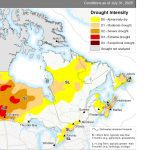CHICAGO, April 28 (Reuters) – A weekend storm is expected to bring as much as a foot (30.5 cm) of snow to parts of the U.S. Plains winter wheat belt and heavy rain to the southern Midwest, stalling corn and soybean planting, meteorologists said on Friday.
This week as the forecast for this storm developed it has supported wheat futures, but the gains have been modest as expectations so far are that damage will be light. A return to warmer, drier weather in the following week is expected to allow normal crop growth and seeding of spring crops to resume.
Read Also

Canada lifts several import tariffs on U.S. goods as talks continue
Starting September 1, Canada will adjust its tariffs on agricultural products, consumer goods and machinery, Prime Minister Mark Carney announced at a press conference in Ottawa on Friday.
“It’s not unusual for them to get snow (in late April) but it’s unusual to see those amounts. So this is a pretty powerful storm,” Keeney said.
Cold temperatures in the storm’s wake pose a risk of freeze damage for 20 percent of the region’s developing winter wheat crop by early Monday, the Commodity Weather Group said in a note to clients. Temperatures in western Kansas could drop into the mid to upper 20s Fahrenheit (-4 to -2 degrees Celsius).
In Kansas, the largest U.S. wheat state, 82 percent of the winter wheat had reached the “jointing” stage of growth by April 23, and 25 percent of the crop was in the “heading” stage, the U.S. Department of Agriculture said, leaving it vulnerable to freeze injury.
Temperatures are expected to warm into the 70s by the end of next week, Keeney said.
The same storm system is expected to deposit 3 to 5 inches of rain broadly across southern Missouri, northern Arkansas, central and southern Illinois, western Indiana and western Tennessee. The “Bootheel” region of southeast Missouri could get 10 inches of rain, Keeney said.
Flooding was a risk in the region, where farmers have been planting corn and soybeans.
Following the storm, most of next week should be much drier in the Midwest and mid-South, which should limit the threat of standing water in fields, the Commodity Weather Group’s note said
















